Invasive non-native species are a huge problem in the UK, costing the UK economy up to £1.7 billion a year! They are often accidentally introduced and are defined as any species whose introduction or spread threaten biological diversity or have any other unforeseen impacts. They are considered the second greatest threat to native wildlife, with non-native invasive plant species able to alter ecology, spread disease, block waterways and decrease water quality, threaten habitat availability and in some cases cause physical harm to humans.
As invasive non-native species are such a great threat to biodiversity, there is concern that climate change will cause further problems by altering them, turning non-native species into invasive non-native species, able to cope with changes better than our native species and outcompeting them in the future.
Raising awareness about these invasive species and preventing their spread is the most effective method in tackling them. Once established they become increasingly difficult and expensive to deal with, costing the UK around £700,000 a year just to treat invasive weeds. Often with invasive plant species their eradication isn’t possible, commonly due to effectively spread minute seeds, which makes control and containment of them the best option.
Himalayan Balsam
Distinguished by its bright pink, bonnet-shaped flowers, this invasive plant species grows in dense patches and is extremely good at seed dispersal, causing it to grow exponentially. Not only are its seed pods explosive, dispersing seeds up to seven metres away, it also utilises its preferred habitat along riverbanks to send seeds down the waterway, causing further dispersal downstream.
Introduced in 1839, Himalayan
Balsam is a dangerous plant which can quickly grow out of control. Not only
does it shade native plants on the riverbank due to its ability to grow up to 2m
tall, it heavily affects the river as
well. When in full growth its large density along the riverbank increases the
likelihood of flooding and then when it dies back there is nothing left to protect
the bank, leaving it open to erosion.
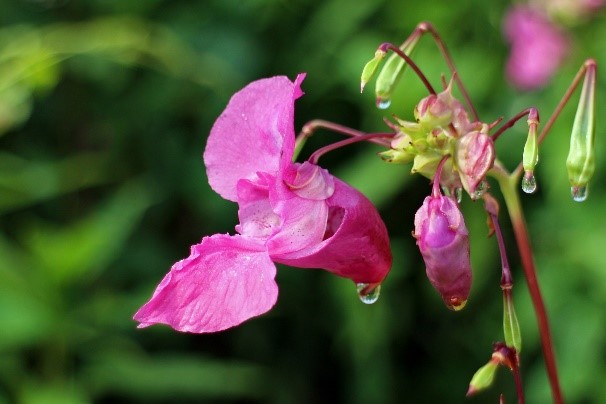
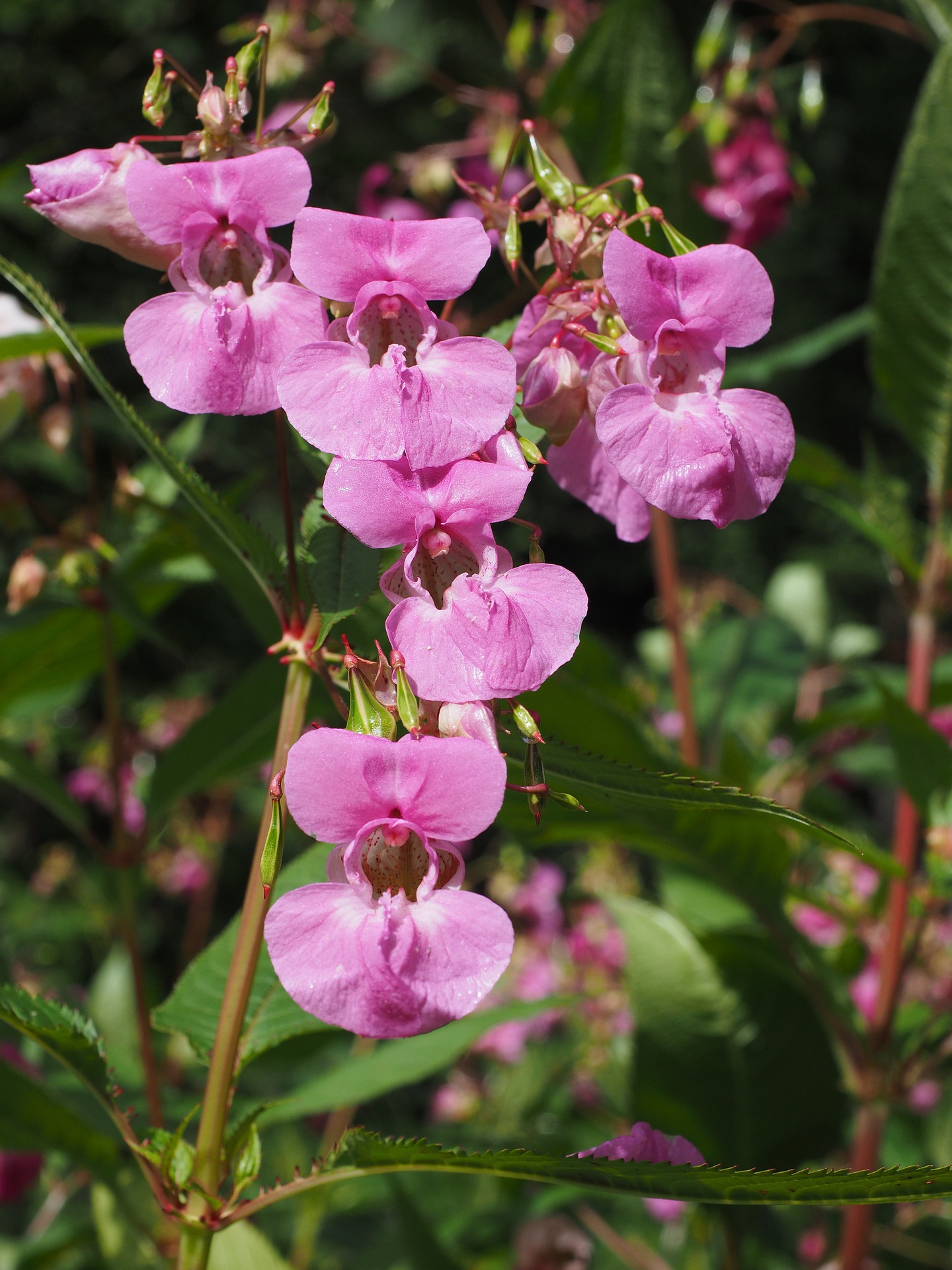
As a schedule 9 species under the Wildlife and Countryside Act, 1981, Himalayan Balsam should not be planted and should be carefully removed where possible. However, as it is being increasingly used as a food source for pollinators, it is essential to replace that food supply with native nectar rich wildflower species. This is further evidence as to why projects such as this one and other similar projects are so important, adding valuable habitats and native wildflowers in meadows and hedgerows.
To learn more about Himalayan Balsam and its removal in Lincolnshire visit https://lincsrivers.org.uk/upper-witham-invasive-plant-species-project/.
Floating Pennywort
Floating pennywort is another invasive non-native plant species that causes major issues for rivers and wildlife. Able to grow up to 20cm a day, it quickly blankets watercourses, blocking waterflow, outcompeting native plants and obstructing oxygen flow.
This invasive plant can be identified by its kidney shaped leaves with a slit at the stem. Often found floating on the water surface it can also be emergent or rooted to banks most commonly in slow moving or still waterways.
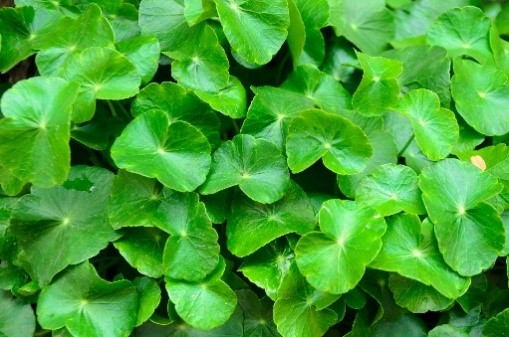
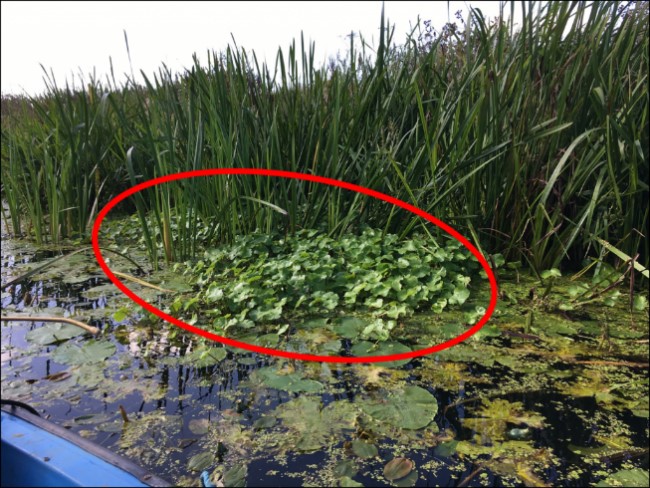
As Floating Pennywort can regrow from tiny fragments its removal is very difficult, often able to regrow in vast amounts when left. Stopping it from spreading is extremely important not only for the sake of the local wildlife, affecting in-channel species by blocking out light and therefore reducing water temperatures, but it can also easily become a flood risk, blocking channels and in some cases causing water to back up.
For more information on floating pennywort and the important work Lincolnshire Rivers Trust are doing to eradicate it, visit https://lincsrivers.org.uk/pennywort-on-the-witham/.
Japanese Knotweed
Japanese Knotweed is a very fast-growing non-native and invasive, tall plant which outcompetes and shades native plant species, preventing their growth.
Identified by its triangular leaves and small white flowers blooming in summer, this plant can spread very easily, covering waterways and riverbanks. Causing destructive damage, the roots can tear up riverbanks and paving, then leaving banks exposed in winter when the plant dies back, leaving the river open to erosion and siltation.

Common throughout the UK, if left unchecked and with no natural predators the weed can grow up to 2cm a day up to 3m high overall! As well as its fast growth, its ability to disperse seeds down river courses, and its ability to grow from tiny fragments, smaller than a one pence piece, makes it an extremely difficult plant to get rid of. As such, it is listed under Schedule 9 of the Wildlife and Countryside Act, 1981, making it a criminal offence to plant it in the wild.
For more information on Japanese Knotweed and the work Lincolnshire Rivers Trust are doing to eradicate it, visit https://lincsrivers.org.uk/upper-witham-invasive-plant-species-project/.
Giant Hogweed
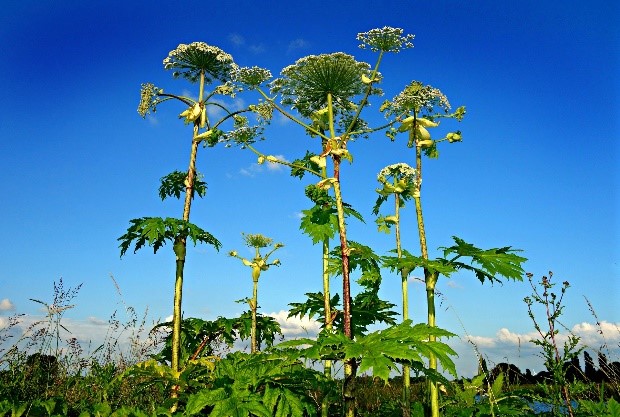
Giant Hogweed is arguably one of the UK’s most dangerous invasive plants, producing a toxic sap that can cause serious burns if exposed to sunlight. Growing up to 7m high, with large leaves up to 1.5m wide with clusters if white flowers, it prevents sunlight from reaching other plants, allowing it to thrive wherever it establishes.
Similarly to other invasive non native plants in the UK, Giant Hogweed is effective at speed dispersal, producing up to 50,000 seeds. Outcompeting other plants on the riverbank and dying back in the winter also leaves riverbanks open to erosion where native plants would keep the bank stable without its presence.
As this plant is so dangerous to both native wildlife and the public, causing burns and skin issues for months after exposure, it is listed under Schedule 9 of the Wildlife and Countryside Act, 1981, making it illegal to plant it.
For more information on Giant Hogweed and the work Lincolnshire Rivers Trust do to eradicate it, visit https://lincsrivers.org.uk/upper-witham-invasive-plant-species-project/.







